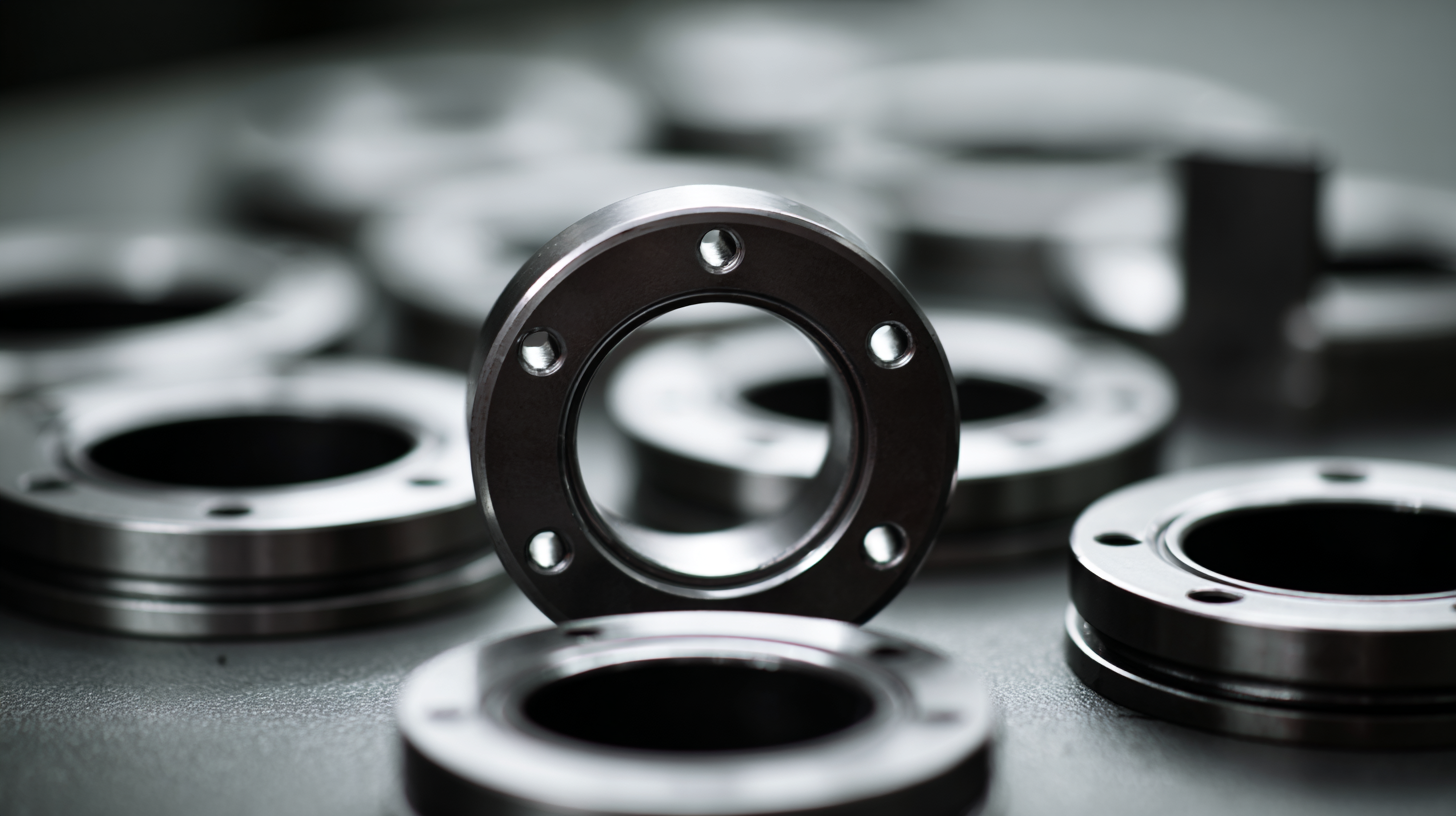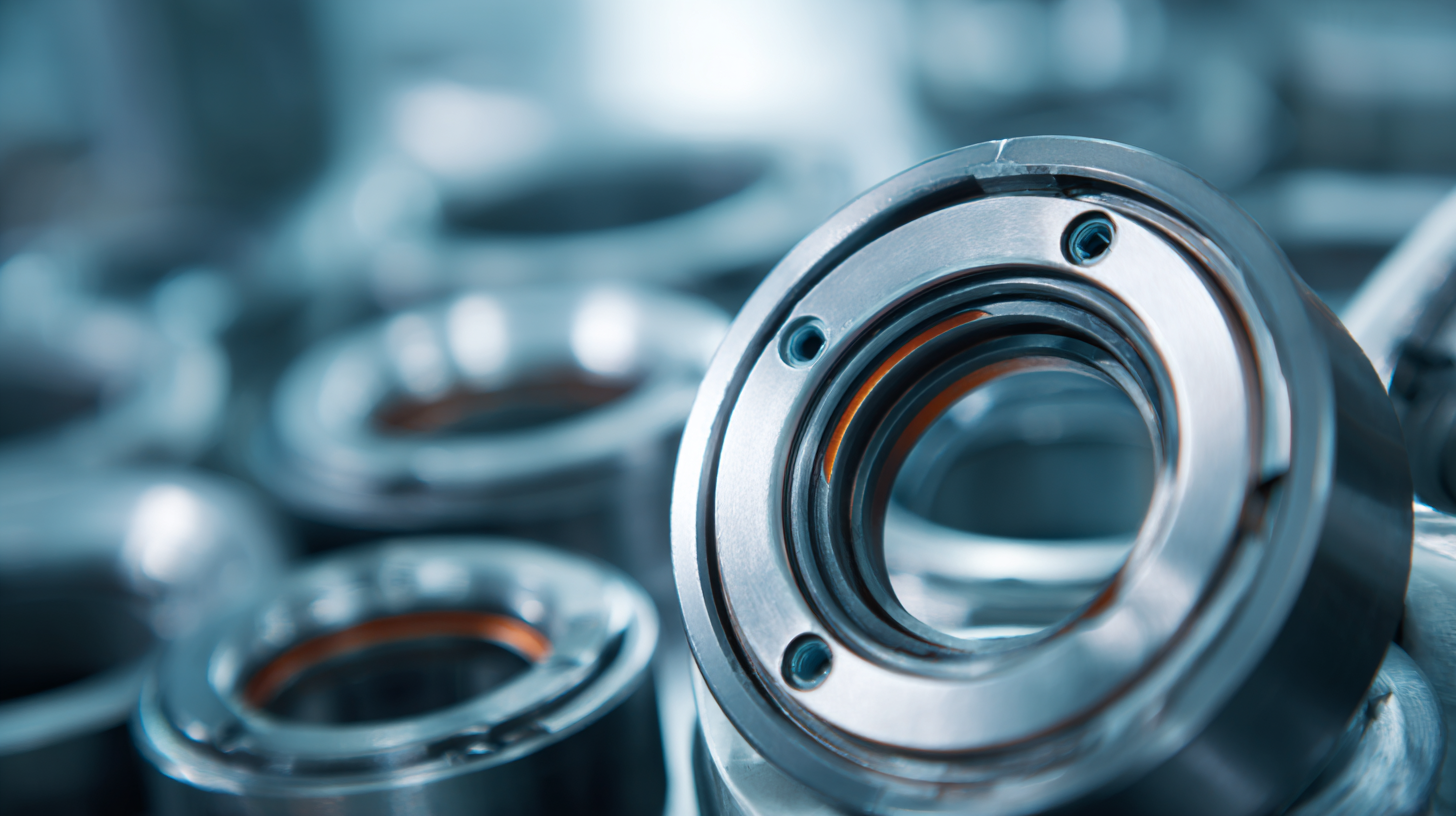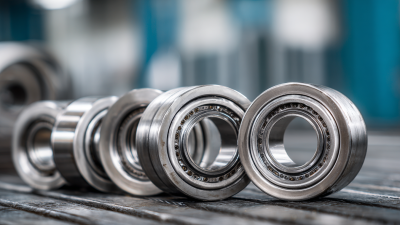Understanding the Unique Advantages of Flanged Bearings for Global Procurement
In the realm of global procurement, understanding the unique advantages of various components is crucial for optimizing supply chain efficiency and product performance. One such component that has garnered attention in industrial applications is flanged bearings. These specialized bearings, featuring a flange that provides additional stability and alignment, are increasingly favored across diverse sectors for their versatility and enhanced load distribution capabilities. Flanged bearings not only simplify assembly but also reduce the risk of misalignment and wear, leading to prolonged operational lifespan and reliability. As businesses strive for improved performance and cost-effectiveness, recognizing the key benefits of flanged bearings becomes essential. This guide aims to delve into the specific advantages of flanged bearings, shedding light on their role in global procurement strategies and how they can contribute to superior operational outcomes.

Key Characteristics of Flanged Bearings in Global Markets
Flanged bearings stand out in global markets due to their unique design and functionality, which cater to a variety of applications. These bearings feature an integrated flange that provides support and stability, making them easier to install and align with other components. This characteristic not only simplifies the assembly process but also enhances the overall reliability of systems, particularly in environments where space is limited. Manufacturers and suppliers recognize the convenience of flanged bearings, leading to increased demand in international procurement.

Another key characteristic of flanged bearings is their versatility. They are available in various materials, including steel, plastic, and composites, allowing for tailored solutions based on the specific requirements of different industries. This adaptability ensures that flanged bearings can perform optimally in diverse conditions, whether it be in automotive, aerospace, or industrial applications. Furthermore, their ability to accommodate misalignment and varying load conditions makes them an attractive choice for engineers and designers worldwide, promoting their widespread adoption in global supply chains.
Benefits of Flanged Bearings for International Procurement Strategies
Flanged bearings are increasingly becoming a pivotal component in international procurement strategies due to their unique benefits, particularly in enhancing efficiency and reducing operational costs. According to a report by the Bearing Manufacturers Association, flanged bearings can reduce installation time by up to 30%, allowing companies to streamline their supply chain processes and minimize delays. This is crucial for global procurement teams tasked with managing complex logistics and ensuring timely delivery across multiple regions.

Furthermore, flanged bearings provide greater mounting flexibility and load stability, essential for various applications, including automotive and industrial machinery. Data from Frost & Sullivan indicates that the global bearing market is projected to reach $60 billion by 2025, with flanged bearings expected to capture a significant market share due to their adaptability and reliability in high-demand environments. By integrating flanged bearings into procurement strategies, companies can leverage these advantages to maintain competitiveness in an increasingly globalized economy while ensuring quality and performance standards are met.
Comparative Analysis: Flanged Bearings vs. Standard Bearings
When comparing flanged bearings to standard bearings, it’s essential to appreciate the distinct structural qualities that make flanged bearings particularly advantageous in various applications. Unlike standard bearings, which provide support around their central shaft, flanged bearings come equipped with a flange that allows them to be mounted directly onto a surface. This design not only simplifies installation but also enhances stability, making flanged bearings an excellent choice for applications that require secure positioning and alignment.
Furthermore, the flanged design contributes to increased load-bearing capacity and greater resistance to misalignment. In situations where space is limited or where mounting flexibility is crucial, flanged bearings can significantly streamline the procurement process. By facilitating direct attachment to housing structures, they reduce the need for additional mounting hardware and minimize the risk of failure due to misalignment. As a result, businesses looking to optimize their procurement strategies may find that flanged bearings offer a more efficient and reliable solution than their standard counterparts.
Understanding the Unique Advantages of Flanged Bearings for Global Procurement - Comparative Analysis: Flanged Bearings vs. Standard Bearings
| Feature | Flanged Bearings | Standard Bearings |
|---|---|---|
| Mounting Flexibility | High – designed for easy mounting | Moderate – may require additional components |
| Space Efficiency | Compact design ideal for limited spaces | Larger footprint, less suitable for tight areas |
| Load Capacity | Generally higher load capacity | Standard load capacity |
| Cost | Higher initial cost but lower maintenance over time | Lower initial cost but potentially higher maintenance |
| Performance in Harsh Conditions | Superior performance in extreme conditions | Adequate performance, may require protective measures |
| Vibration Absorption | Excellent vibration dampening | Standard vibration absorption |
Applications of Flanged Bearings Across Different Industries
Flanged bearings are pivotal components utilized across various industries, offering distinctive advantages that enhance operational efficiency. In the automotive sector, flanged bearings support axle and wheel assemblies, ensuring smooth rotation and reduced friction. Their design is particularly beneficial in these applications, as the flange allows for easy mounting and alignment, which contributes to increased durability and reliability under heavy loads and dynamic conditions.
In the manufacturing industry, flanged bearings play a critical role in conveyor systems and machinery. Their ability to handle axial loads while maintaining precise alignment minimizes wear and extends the lifespan of equipment. Additionally, flanged bearings are employed in HVAC systems, where they support fans and blowers, optimizing airflow and energy consumption. This versatility across diverse applications not only highlights the functionality of flanged bearings but also their impact on productivity and maintenance costs in various industrial settings.
Challenges and Solutions in Sourcing Flanged Bearings Globally
The global bearings market is witnessing significant growth, projected to increase from USD 50.16 billion in 2025 to USD 97.10 billion by 2030, demonstrating a robust CAGR of 6.39%. As companies expand their sourcing strategies globally, flanged bearings stand out due to their unique advantages, especially in installations where space is limited or specific mounting requirements are critical. Their design features, including integral flanges, facilitate secure positioning and simplified assembly, which can ultimately reduce labor costs during installation.
However, procuring flanged bearings on a global scale poses several challenges. Factors such as varying quality standards, fluctuating material costs, and geopolitical uncertainties can disrupt supply chains. Moreover, the need for compliance with different international regulations can complicate the sourcing process. To address these challenges, organizations are increasingly adopting advanced supply chain management techniques and establishing strategic partnerships with local manufacturers to mitigate risks and ensure a stable supply of high-quality bearings. This approach not only enhances procurement efficiency but also aligns with the current market trend of fostering sustainability and innovation in production practices.
Related Posts
-

5 Key Factors to Choose the Best Stainless Steel Bearings for Global Procurement
-

The Evolution of Best Miniature Bearings in Advanced Technologies
-

Unlocking the Details of Best Bearing Supplies with Key Technical Parameters for Global Buyers
-

How to Choose the Right Sealed Bearings for Your Industrial Applications
-

Stainless Steel Ball Bearings vs. Plastic Bearings: A Comprehensive Performance Comparison
-

Trust in Excellence: Discover the Best Thrust Bearings from China’s Leading Manufacturer